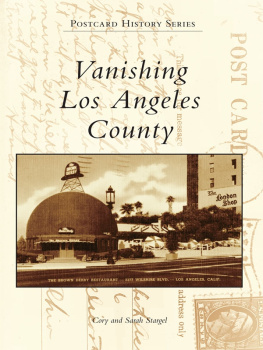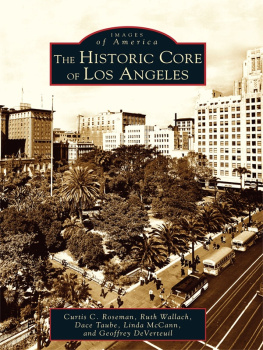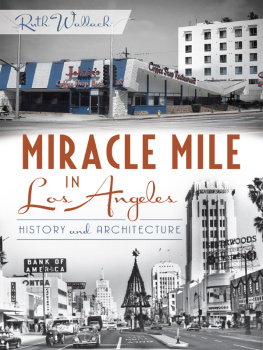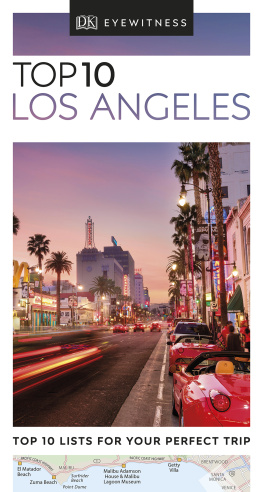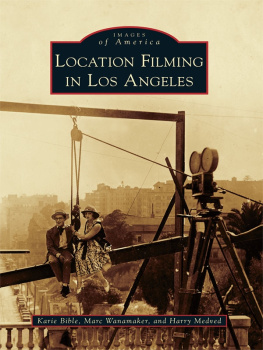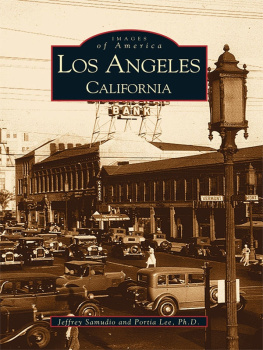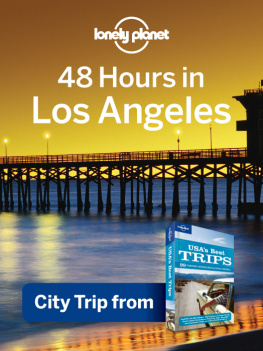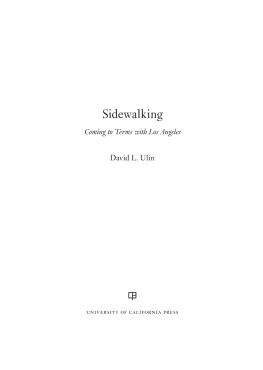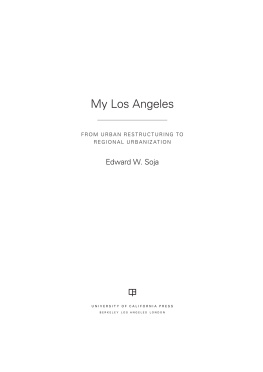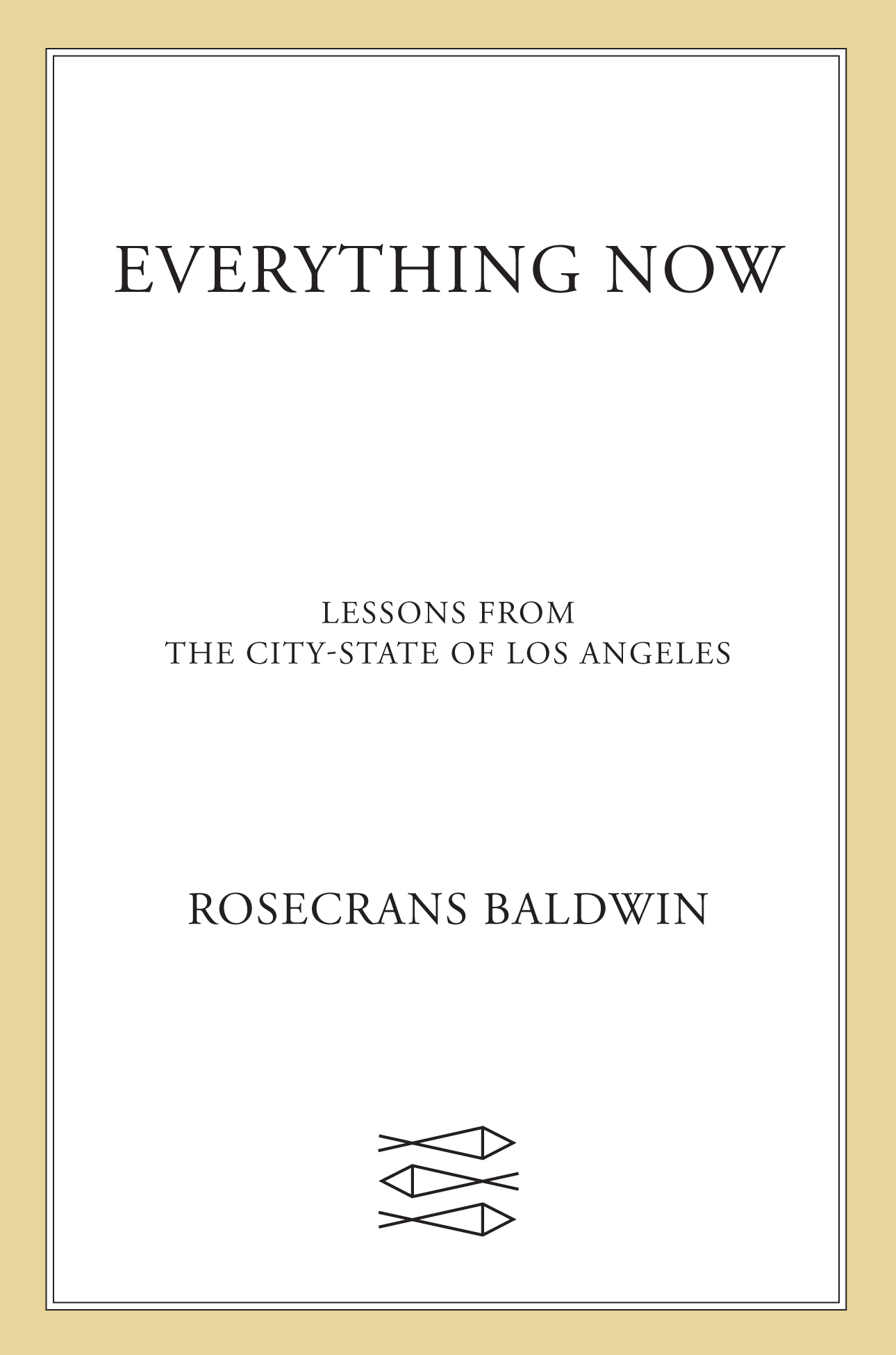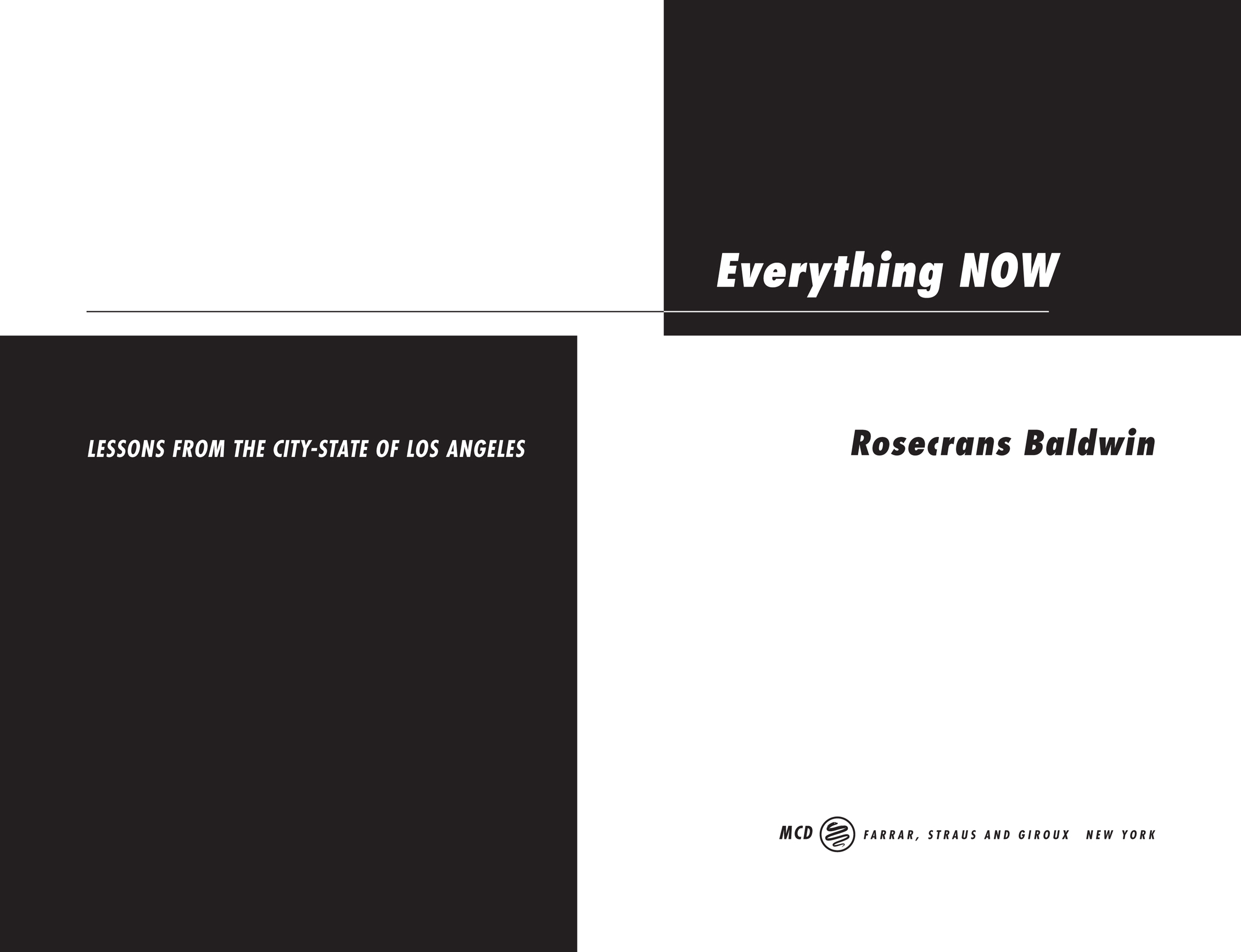The author and publisher have provided this e-book to you for your personal use only. You may not make this e-book publicly available in any way. Copyright infringement is against the law. If you believe the copy of this e-book you are reading infringes on the authors copyright, please notify the publisher at: us.macmillanusa.com/piracy.
of its historyand what it will be next.
The United States of Los Angeles Interpreting L.A. Crucible of a culture Revenge City: The Phantom Cyclist A placeless place City-states of the future The five little kings (of metaphor) Where does the garbage go?
1.0 Los Angeles, California, is enormously ambiguous. It is ambiguously enormous. Almost ninety separate villages of more than ten million people, spread across more than forty-five hundred square miles of swampland glazed by cement, mountains and canyons abutting an ocean, desert parcels cracked by quakes. It is bigger than forty American states in population. Bigger economically than nearly all of them, not to mention Saudi Arabia, Norway, or Taiwan. Nearly a quarter of the way into the twenty-first century, Los Angeles had straggled, sprawled, and germinated to become a swamp-thing megalopolis, so boundless it was nearly impossible to perceive head-on.
Less of a city than a county.
Less of a community than a climate.
Less of a metropolis than an eighty-eight-city nation-state.
1.1 In fact, Los Angeles is the largest government entity in the United States that is not a state, but to say so requires a definition of whats meant anytime Los Angeles is invoked by locals: Metropolitan Los Angeles, El Lay, or the Southland. Not the city in name but the place in realness. Because no one in Greater Los Angeles hears the name L.A. and pictures only Boyle Heights, Downtown, or Venice without also thinking of Beverly Hills, Compton, and Hollywood.
Roving micheladas in the San Pedro Fish Market.
Roaming offering plates in Korean churches in the San Fernando Valley.
Santa Clarita, San Bernardino, San Clemente.
Definitely no one brings to mind the Los Angeles of authorized cartography, drawn by centuries of conquest and boom, that looks on maps less like the principal metropolis of the Western United States than a palm tree blown west by heavy winds.
1.2 Conceptually, Los Angeles is unequaled. The most populous county in the most populous state, it is the United States seat of destitution and gated communities. Capital of incarceration and liberal policies. Recently, L.A.s economy outperformed Chicago and New York. Joel Garreau, writing in Edge City in 1991Every single American city that is growing, is growing in the fashion of Los Angeles, with multiple urban coressounded like a descendent of J. Torrey Connor and her Saunterings in Summerland from 1902: A bustling, wide-awake metropolis has pushed north, east, south and westover the hills where the vaquero tended his herds; over the gravel flats where stood the shack of the Digger; straight across the broad acres of the rancho, obliterating the last trace of the land barons hacienda.
The face of Americas housing crisis, a poster child for American hunger, a research experiment into income inequality gone horribly wrongL.A. is both megacity and suburb, multicentered and scattered. As of the 2010 census, it was the most densely populated urbanized area in the United States. In the words of locally born Hctor Tobar, the Pulitzer Prizewinning journalist and author, Los Angeles seems to appear to the twenty-first century what New York City had been to its forerunner, the crucible where a new national culture is being molded, where its permutations and contradictions can be seen most clearly.
1.3 One morning in 2014, a few weeks after my wife, Rachel, and I moved to Los Angeles, a large white man pedaled up to me on a bicycle and skidded to a halt. He was sunburned, covered in grime. His bike was sized for a ten-year-old boy; perhaps it had recently belonged to a ten-year-old boy. The man said in a low voice, If I made a movie called Revenge City, would you go watch it?
Im sorry?
If I made a movie, Revenge City, would you watch it?
I didnt know what to say. Based on the title, probably.
Thats what I thought, he said smugly, and pedaled away.
1.4 The book in your hands, in your ears, as you ride the bus or sit in your den with a cup of tea or something strongerideally, whatever circumstances make reading more pleasant for youis an assessment, after several years of interviews and reporting, of the relationship between Los Angeles and its citizens, with an aim to demonstrate that the standard way of thinking about these people and their society often rests on a misunderstanding, that L.A. is just another big city in the United States, when actually it is something else.
Los Angeles has long resisted classification. People often struggle to describe it. Old town, lost town, shabby town, crook town (Raymond Chandler, The High Window, 1942). I often tell people that Los Angeles makes no sense if you talk about it out loud: the land of slow-float car chases and girls with Mercurochrome hair (Lynell George, Native to the Place, 2001). For my part, it is the only place in the United States where I can stand anywhere and feel like I am in the middle of everything, and also like I am nowhere at all. Joan Didion said of Los Angeles, in an interview in 1973, Every minute is a tabula rasa. There it isby itselfno back or forward references. Just Right Now.
Crucible city. Edge city. Revenge city. To attempt to say what is Los Angeles, other than by itself, sometimes feels like trying to pin down a cloud. The itself part is difficult to account for, too.
1.5 But what is it? A 2010 article in Forbes magazine by Joel Kotkin said that the concept of a city-state was making a comeback. Athens, Carthage or Venice may have constituted the great city-states of the past, but the 21st century is likely to create its own batch of luxuriant successors. Ten years later, a piece in Le Monde diplomatique, published in the throat of a global coronavirus pandemic, suggested the same thing. Many city decision-makers feel national governments are too bogged down in ideological and partisan conflicts to act effectively, Benot Brville wrote, and believe cities must come together to make up for their deficiencies.
A city-state, loosely defined, is a sovereign place composed of a metropolis and its surrounding territories. Sparta of ancient history, Singapore today. Prior to the modern rise of nation-states, the city-state model enabled civilization to flourish: Alexandria, Florence, the mueang of Southeast Asia. More recently, in addition to Singapore, Monaco and Vatican City formally qualified, and perhaps San Marino, but the Forbes story suggested that if criteria were redrawn to be more contemporary, more places might be eligible for possessing a list of key features: vast wealth, a large port, money laundering, international museums worth visiting, guests from overseas who bank money in local investments, efficient authoritarian order, multiple languages spoken in good restaurants serving alcohol, and an ambition to host the World Cup.




